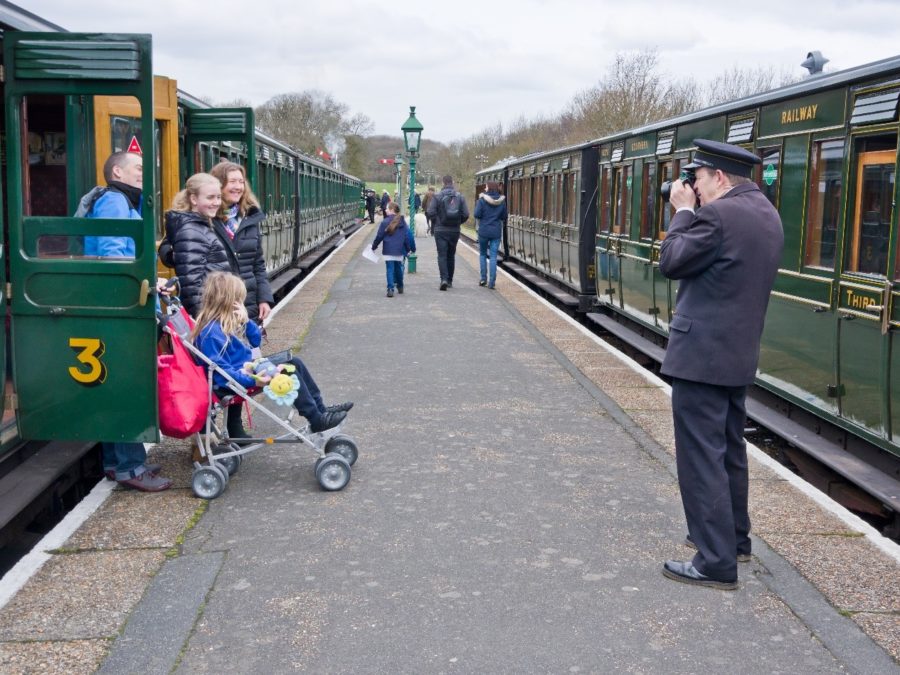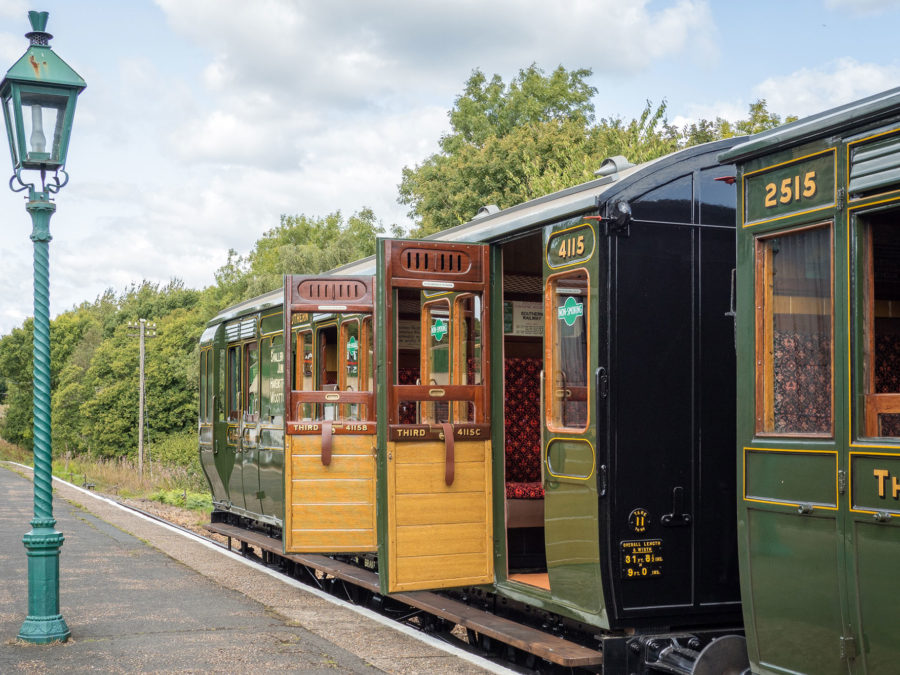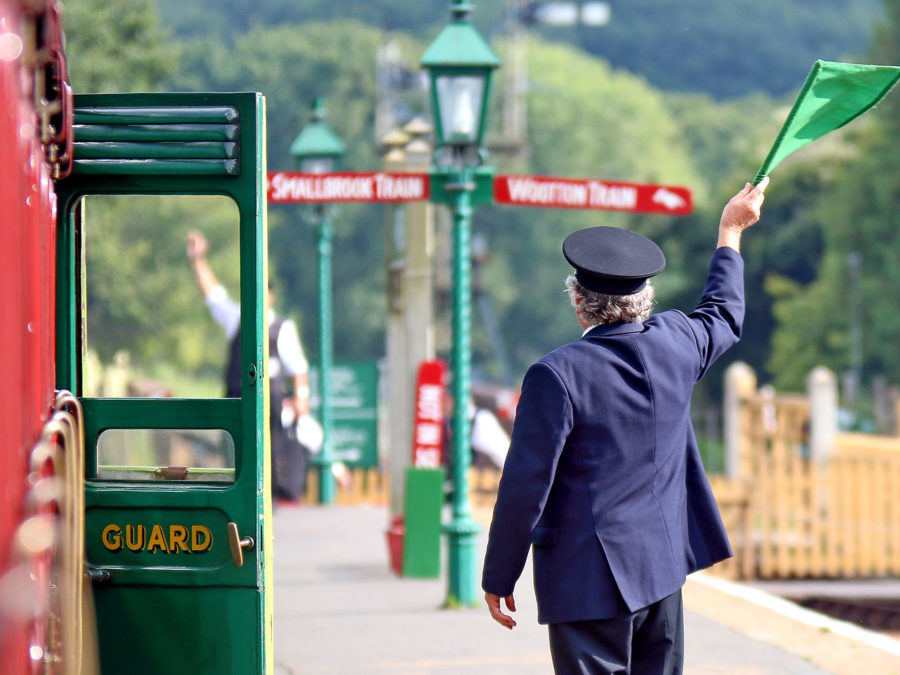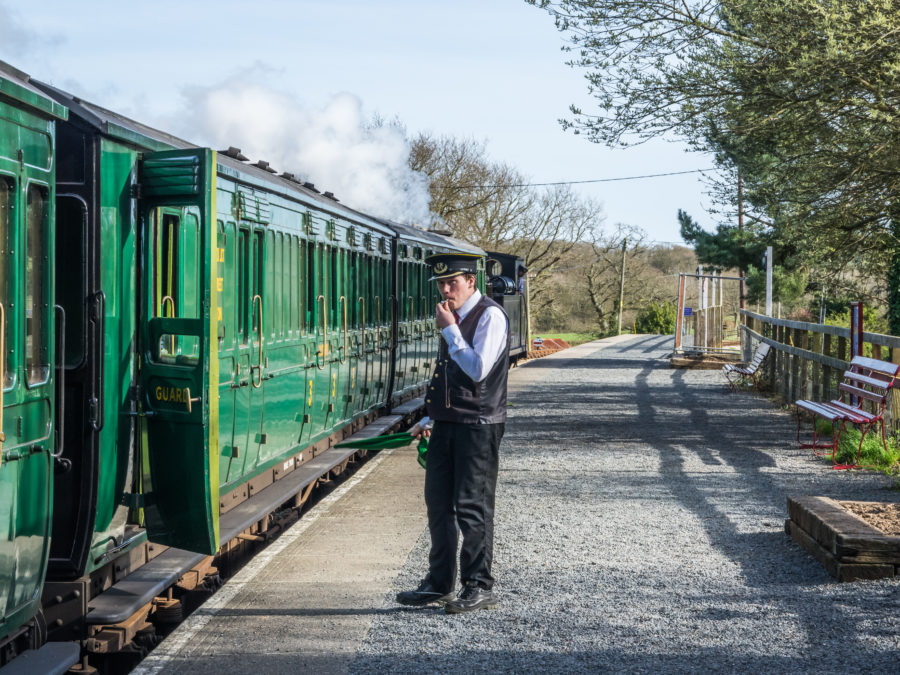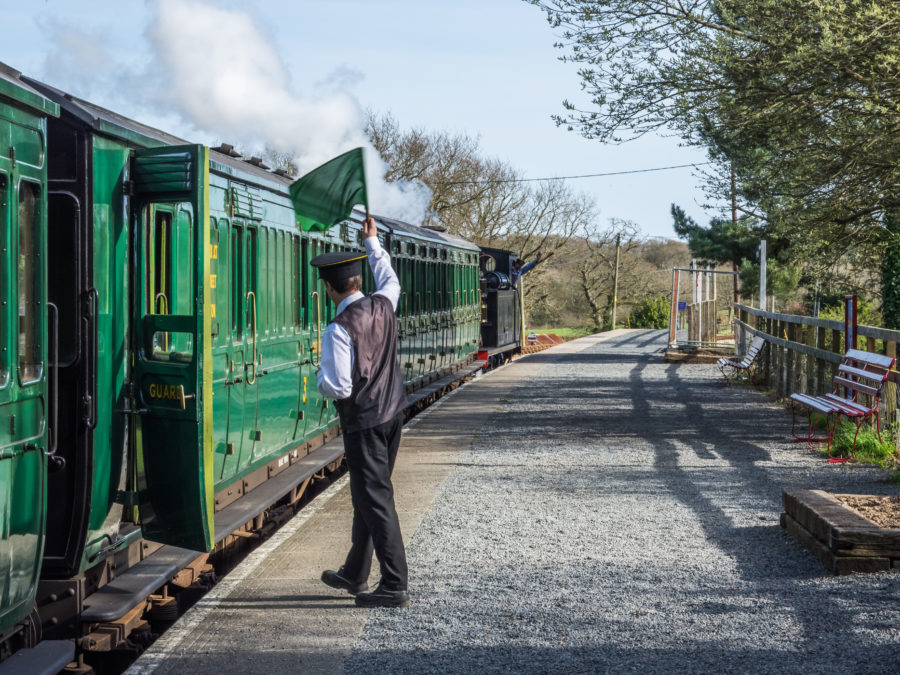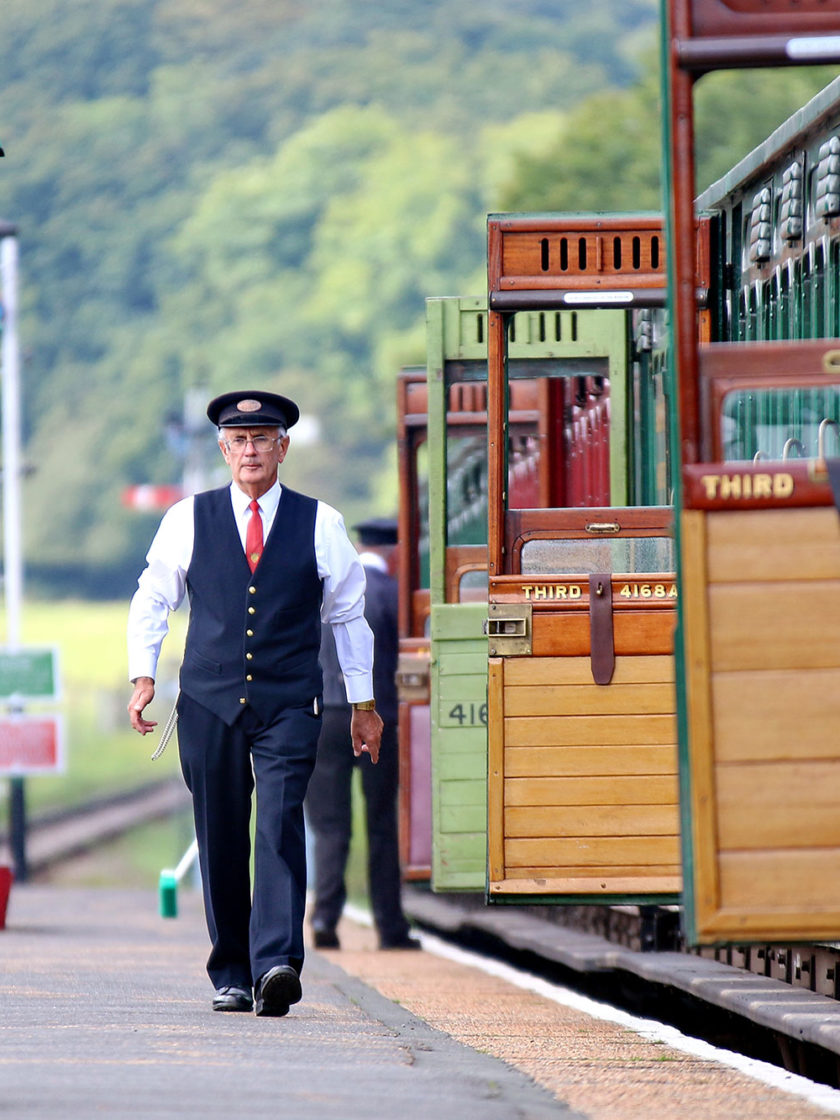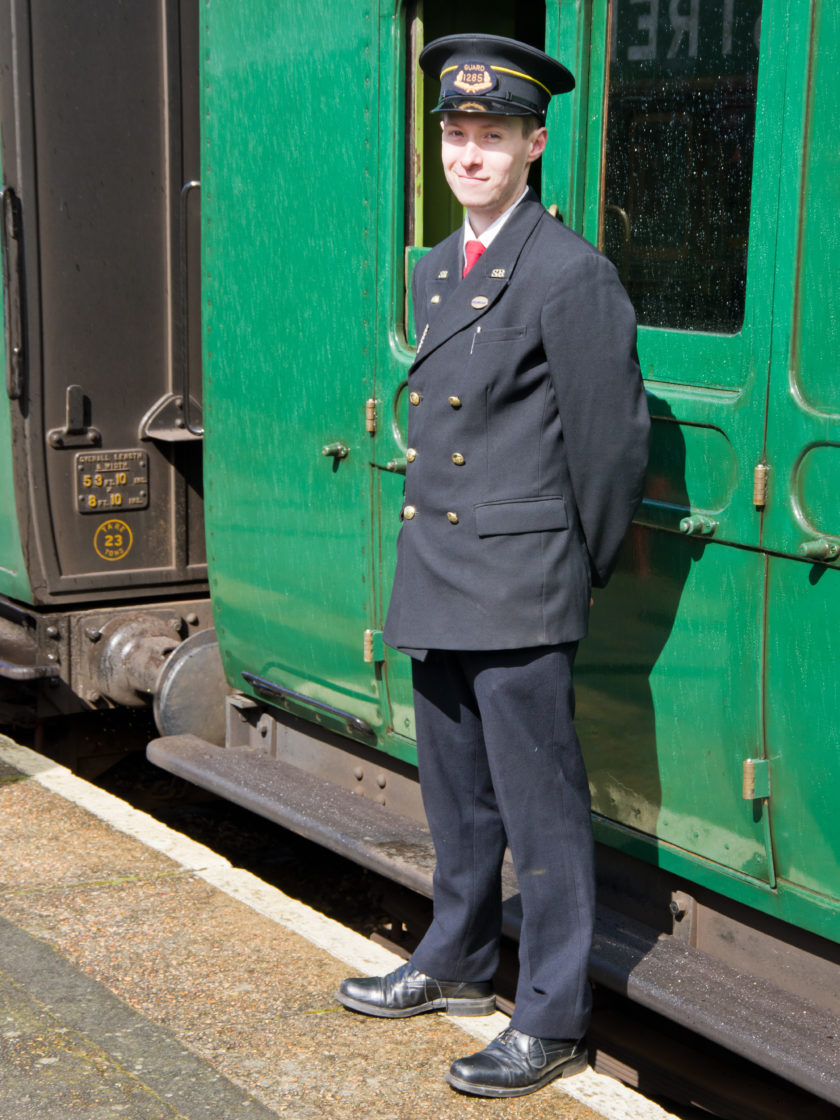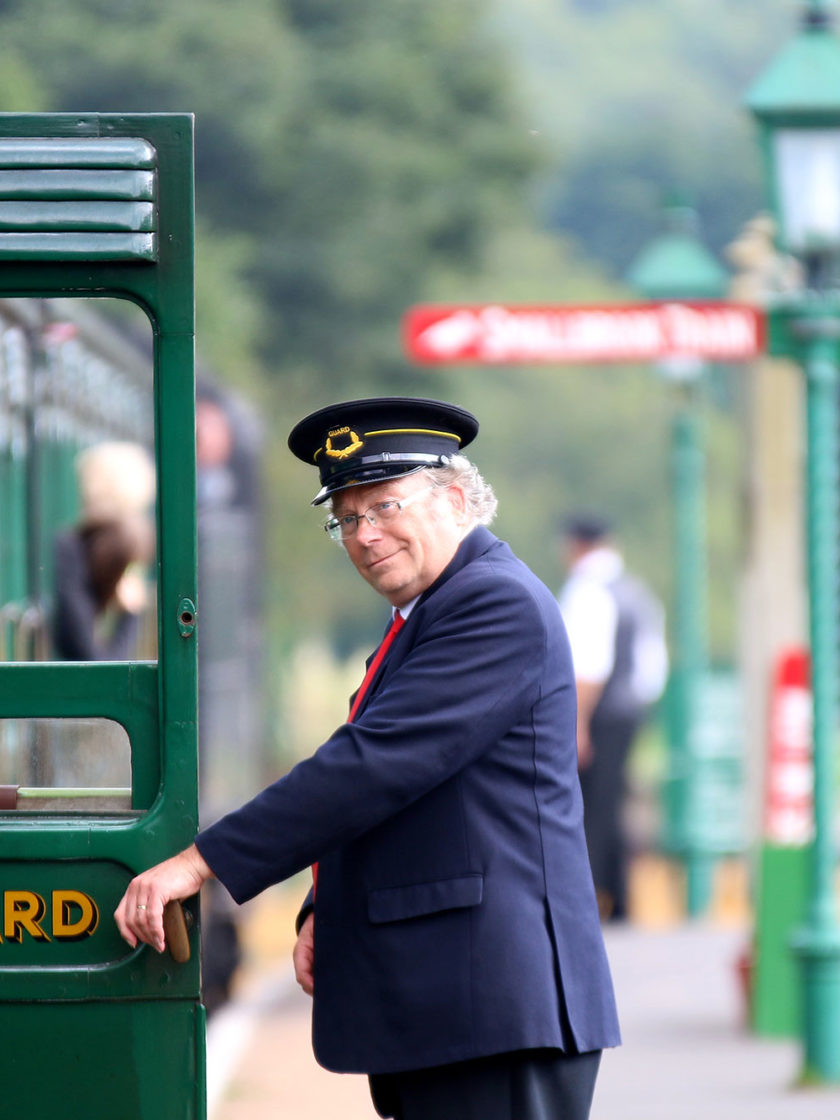Regular volunteer Stuart Duddy shares a typical day in the life of a guard…
Contrary to what some may think, there is much more to being a guard than simply waving a green flag and blowing a whistle. The guard is responsible for the safety of the train so there are many checks to do before our first visitors arrive.
Signing-on
Most days start at 9.00. I first check the notice board for any relevant information and then add my signature and arrival time to the signing-on sheet. Signing-on not only confirms that duty-holders are present – they also sign to confirm that they are fit and well, not fatigued, nor under the influence of alcohol or drugs.
Before heading to the train, I’ll collect a radio from the charging unit and the keys for the ground frame cabins at Wootton and Smallbrook Junction. I’ll also pick up the Guard’s folder. In addition to working timetables and special traffic notices this contains Guards’ Journals and Carriage Defect Sheets and the details of any pre-booked groups together with reservation labels.
On one-train, ‘blue timetable’ days, carriages will usually have been stabled overnight in the platform at Havenstreet station. However on a two-train days I may be heading to Train Story to prepare my train before shunting it into the station.
Daily checks
Having arrived at the guard’s van, I first check to ensure that the hand brake is firmly applied. I then don my gloves and a high-visibility jacket before undertaking a ‘walk-around’ check. Before going down onto the track I secure a large red and white ‘Not to be Moved’ board onto the train and speak with the signalman so that he can also prevent any movements onto the train.
Its important to check that the carriages are buffered together and the screw couplings are tight, but not overly so. Unused screw couplings should be stowed securely on their hooks and the continuous air brake hose is open between the carriages – and closed at each end of the train. We also check that the steam heat hoses are coupled together; that none of the carriages have been isolated from the continuous brake system; that the red butterfly valves on each carriage are set correctly; and, finally, that the leaf springs are all in good order.
While the guard is checking the train the platform staff are usually unlocking the compartment doors, lowering the droplights and cleaning windows. We aim to have this complete before the 9.30 briefing, when all the team come together to get organised for the day ahead.
The first train departs
We’re usually ready to welcome our first passengers onto the train by 9.45 and shortly after that the locomotive makes its way either from the sidings to the front of the train. By looking at pressure gauge in the guard’s van I can see when the fireman has connected the brake hoses and the driver has turned on the Westinghouse pump. The needle moves around to show 70 psi, and that’s my cue to undertake the all-important brake test. I open the brake valve in the guard’s van and reduce the pressure by at least 20 psi. The needle dropping is accompanied by the loud sound of compressed air escaping from the train pipe and of the carriage brakes being applied. When the valve is closed the pressure should immediately start climbing back to 70 psi followed by the sound of the brakes being released again.
With a satisfactory brake test completed, I walk to the front of the train to speak with the driver. The operating rules require that I inform him of the train’s weight and confirm that no vehicles have been isolated from the automatic braking system.
Returning to the guards van, checking doors are secure as I go, there might be a few minutes in which to exchange pleasantries with our visitors before it’s time to depart. I first check that the signal is clear, that the doors are still closed and that no one is showing any sign of attempting to join or leave the train. The Foreman confirms his work is complete by raising one hand above his head. A blast on my Acme Thunderer whistle and a wave of my green flag is acknowledged either by the Driver or Fireman. I step into the guard’s van and, seconds later, we’re moving. I lean from the window, checking that all is well. Once we’re clear of the station, I enter the departure time onto the Guard’s Journal. All departure and arrival times are logged on the Journal, together with any other relevant information.
The day’s services
Usually, the day settles quickly into a routine. Depending on whether pointsmen are rostered at the ends of the line I might have to operate the ground frames at Wootton and Smallbrook Junction, changing the points to enable the locomotive to move to the other end of the train. Hopefully, a Guard Assist has been rostered to help with duties such as unlocking First Class compartments and assisting mobility impaired passengers access our specially adapted compartments by means of ramps carried on all trains. If there is no Guard Assist such responsibilities also fall to the Guard.
At each end of the line, the tail lamp must be moved from one end of the train to the other and a brake test must always be completed before departure. Shortly after departing both Wootton and Smallbrook, Guards contact the Signalman at Havenstreet using our digital radios to advise the departure time. Occasionally, trains stop on request at Ashey. Intending passenger on the platform need to signal to the Driver whilst those on the train should tell the guard in advance.
We usually have a lunch break of around 40 minutes. The actual time depends on which timetable is operating but the break usually starts at around 13.30. And then it’s back to the same routine for the afternoon.
Occasionally, things go awry and that’s where a thorough knowledge of the Railway’s operating rule book and procedures is necessary. The rule book sets out the safe practices, both for normal operations and for when things go wrong.
End of the day
Most operating days end shortly before 17.00. Having arrived back at Havenstreet I screw down the hand brake, complete the Journal and Carriage Defect Sheet, noting anything that may require attention by the Duty Fitter or one of my Carriage & Wagon colleagues. The station staff usually assist in sweeping the compartment floors, closing the droplight windows and locking the doors. It’s then simply a case of returning the Guard’s folder, the keys and the radio before signing off duty and reflecting on another satisfying day at the Isle of Wight Steam Railway.
Now … when am I rostered next?
Get Involved
Please visit the volunteering section of our website if you’re inspired to volunteer at the railway.
